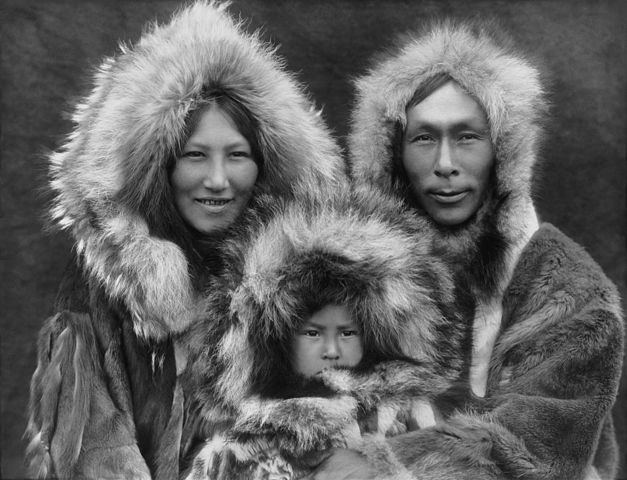
ALST 680: Multicultural Education
Course Description: Focuses on effective culturally relevant and responsive practices to ensure that every student achieves at his/her highest level, regardless of intellectual ability, race, gender, religion, sexual preference and/or socio-economic levels. Explores ways teachers and school systems can support respectful and equitable learning for all students as well as an appreciation for differences. Includes the challenges of education in Alaska, with attention to the Alaska Standards for Culturally Responsive Schools. Explores possibilities in prejudice reduction, curricular inclusion, empowering school culture, and equity pedagogy.
Overall Course Objectives: There are three interrelated overall objectives for the course. (This framework is adapted from Sue, Ivey & Pederson, 1996, A Theory of Multicultural Counseling and Therapy):
- To develop awareness of multicultural issues of importance in education (and other fields) today
- To increase knowledge of multicultural education
- To develop skills in meeting the needs of diverse populations
Student Learning Objectives (SLOs):
- Students reflect on their own socio-cultural identities and understand the differential access to power accorded to various social and cultural groups.
- Students articulate their own cultural assumptions and biases.
- Students design an instructional plan that incorporates characteristics of the local community’s culture and the Alaska Standards for Culturally Responsive Schools. *
- Student conducts a cultural self-study to better understand cultural beliefs and practices of others. *
*Artifacts for LiveText ePortfolio.
ED 680 Lessons/Assignments
- June 13 – Opening Circle with David Katzeek. Walkabout – introduce self to partner using dyad protocol; partner introduces you to group.
- June 14 – Share objects of cultural significance. Generate norms for working together. Introduce Cultural Self-Study due in Blackboard by Monday, June 20 at 8:30 a.m.
- June 15 – Elder’s panel. Reflect on the Wisdom of Our Elders in a blog post.
- June 16-17 – Visit Goldbelt Heritage Institute culture camp. Math Trail, Place-based science field investigations, learning cycle model (LCM). Reflect on characteristics of culturally responsive teaching in CRT blog post.
- June 20 – Jigsaw close reading of Beyond Heroes and Holidays using the “Save the Last Word for Me” protocol and share out highlights of your discussion with the whole group. What are the highlights, questions raised, wonderings from your close reading or from the whole group presentations. Post your thoughts in BH&H blog post.
- June 21-22 – Michelle Snyder introduces an Alaska history lesson on Attu and Kiska; Alberta Jones shares tips on including Elders in the classroom; place-based ELA lesson by Scott Christian; using picture books in the secondary class by Kathy Nielson; reading by Ernestine Hayes. Use the rubric to evaluate a place-based or culture-based picture book and then write a brief blog post (LIT) on how you might use this book in your content area classroom. Edit your original CRT blog post to include any new thoughts you have on culturally responsive teaching based on the lessons presented by these guests. Please don’t erase anything from your original CRT post; instead, draw a line across the page and add the sub-title “Further thoughts on CRT”.
- June 23 – Digging into the Alaska Standards for Culturally Responsive Schools. Students create a poster visually depicting each of the five standards for culturally responsive curriculum. Write a blog post (under the category STAND) explaining a lesson that would embody the spirit of the standard that your group examined during class.
- June 24 – Text-based discussion of “I Won’t Learn from You” by Herbert Kohl using “Four A’s” protocol.
- June 27 – Discuss Lisa Delpit’s Multiplication is for White People. Work on your culturally responsive lesson plan.
- June 28 – Review essential questions; collaborate with table partners to ensure your essential question is truly essential.
- June 29 – Share lesson plans in a blog post.
- June 30 -“Issues in multicultural education” discussion. Potluck dinner to unveil the iBook!
- July 1 – Edit regional introductions for content; Closing Circle with David Katzeek; final reflections (blog post in ED 680 Final); course evaluation.
Reading Schedule
| Date | READING ASSIGNMENT
(read PRIOR to date listed) Full ED 680 Bibliography found here. |
| 6/14 | BH&H, pp. xi-36 – in Bb under “content” tab. |
| 6/15 | BH&H, pp. 37-68 found in Bb, and Kohl, pp. 1-32. |
| 6/16 | BH&H, pp. 83-88 found in Bb; skim Alaska Standards for Culturally Responsive Schools at and the Guide to Implementing the Alaska Cultural Standards for Educators |
| 6/17 | Kawagley and Barnhardt (1998); explore the Alaska Native Knowledge Network website, the Alaskool website, and the Culture Card |
| 6/20 | Benson, C. & Christian, S., pp. 59-80 (found in Bb); Dick, A. (1997); Gorski, P. (2004); Edutopia (2015). |
| 6/21 | Delpit, pp. xiii-70 |
| 6/22 | Delpit, pp. 70-119 |
| 6/23 | Delpit, pp. 123-206 |
| 6/24 | Pratt-Johnson, Y. (2006). |
| 6/27 | Banks and Banks (2010), pp. 16-25 and 33-37 |
| 6/28 | Little Bear, L. Jagged Worlds Colliding |
Norms for our classroom:
- Be Present, mind, body, and soul – on time and following breaks.
- Participate fully, honestly, and respectfully.
- Be prepared – enter each day with an open mind and open heart.
- Respect privacy.
Image source: Library of Congress cph.3b36217
A family portrait of an Inupiat Eskimo mother, father, and son. Photographed in Noatak, Alaska, circa 1929. From The North American Indian, by Edward S. Curtis. The scan was made from a black and white film copy negative. Edward S. Curtis – This file was derived from Inupiat Family from Noatak, Alaska, 1929, Edward S. Curtis.jpg: